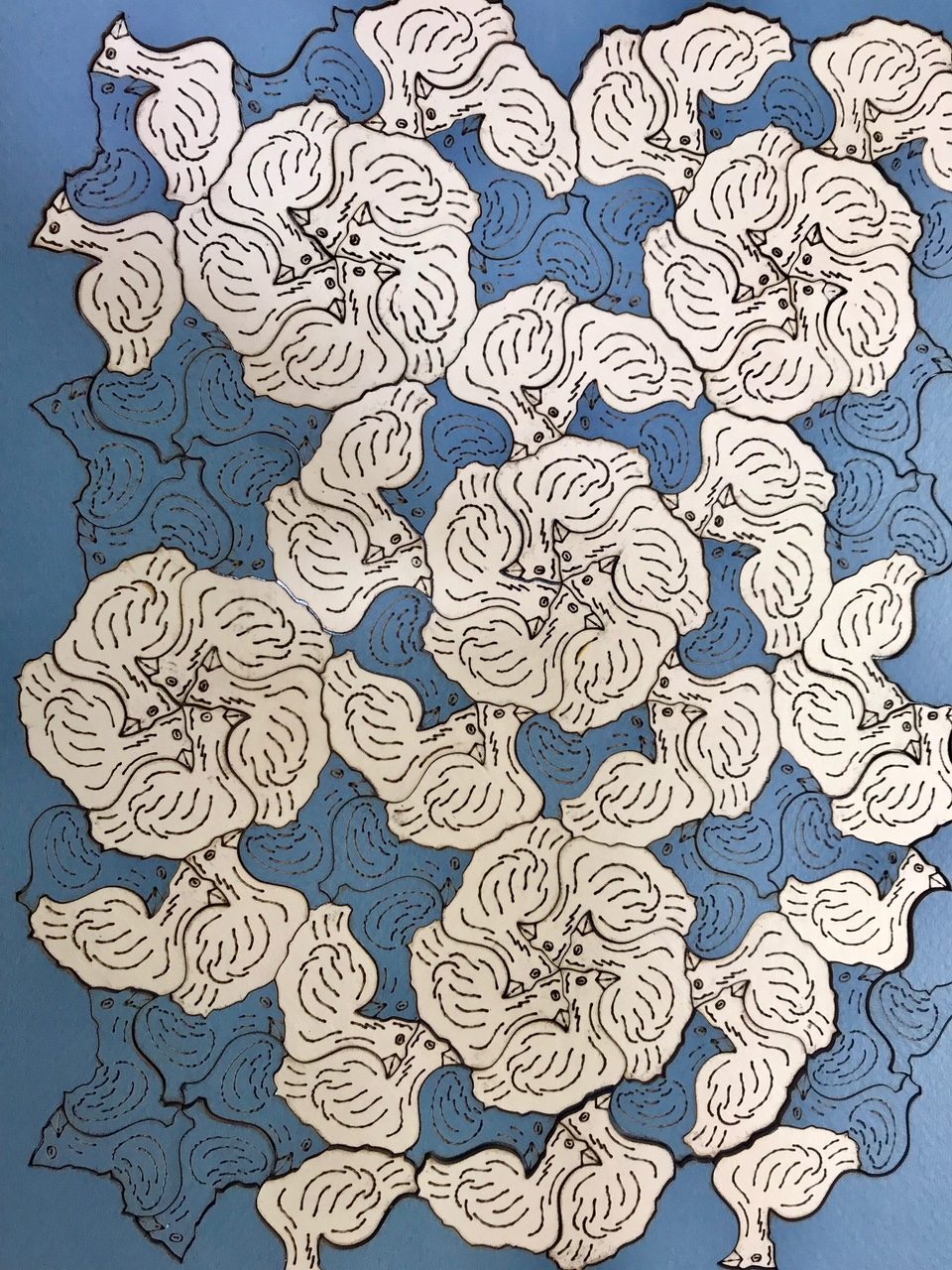Humans of Do Space
Made at Do Space: Penrose Tile Puzzle
August 3rd, 2018 | Rachel Tepper, Operations Manager

In the spirit of the “Humans of New York” photo series and social media phenomenon, Do Space has created a “Humans of Do Space” and “Made at Do Space” series to share the stories of our members, volunteers, and staff. What does Do Space empower them to ‘DO’?
Today we are pleased to introduce you to Dennis Holt. Dennis is a retired engineer who wrote us a lovely letter this summer about how Do Space helped him to achieve his 40-year-long dream (!) to create a Penrose tile puzzle. Dennis first read about Penrose tiles in a Scientific American magazine column known as “Mathematical Games” written by Martin Gardner and published in January 1977.
So, what exactly is Penrose tiling? Think about the symmetrical tiling on your kitchen floor. No gaps occur between the tiles, no two tiles overlap, and the tiling repeats itself at regular intervals. This is what is known as “periodic” tiling. What makes Penrose tiles so interesting is that they lack traditional symmetry – and, no matter how they are arranged, one cannot achieve periodic tiling.
Along with his letter, Dennis included a gift of his treasured Penrose puzzle, which he created last spring at Do Space and the MCC Prototype Lab. The puzzle is a mat board laminated to a refrigerator magnet on a piece of sheet metal. The pieces can be rearranged in many interesting patterns, so Dennis encouraged us to take the pieces out and explore. Mr. Holt ended his letter to us by writing:
“[Do Space is] a tremendous community resource. You certainly were a great help to me.”
Dennis, what does Do Space mean to you and the Omaha community?
An opportunity to learn and try ideas at very low cost.
What have you been able to accomplish at Do Space?
In 1979 a patent was issued to Roger Penrose for non-periodic tiling a surface with two tile shapes. I wanted the puzzles described in that patent ever since but have been unable to buy them. For Christmas, my son gave me some money to work on making the puzzles. Using the computers, software, and laser cutter at Do Space I was able to refine the design for two puzzles. I was then able to make the finished puzzles using the laser cutter at the Metropolitan Community College (MCC) Prototype Lab on the North Omaha campus. I found combining the resources of Do Space and MCC made it possible for me to accomplish this delicate and detailed laser project.
What tools and resources are you using at Do Space?
I used the expensive software such as Inkscape and AutoCAD along with the laser cutter in the 3D Lab. The knowledgeable tech support staff is friendly and were very helpful.
How does Do Space empower you to grow?
The extensive hours when Do Space is open is very important, the very low cost of using the equipment. And again, the technical support staff.